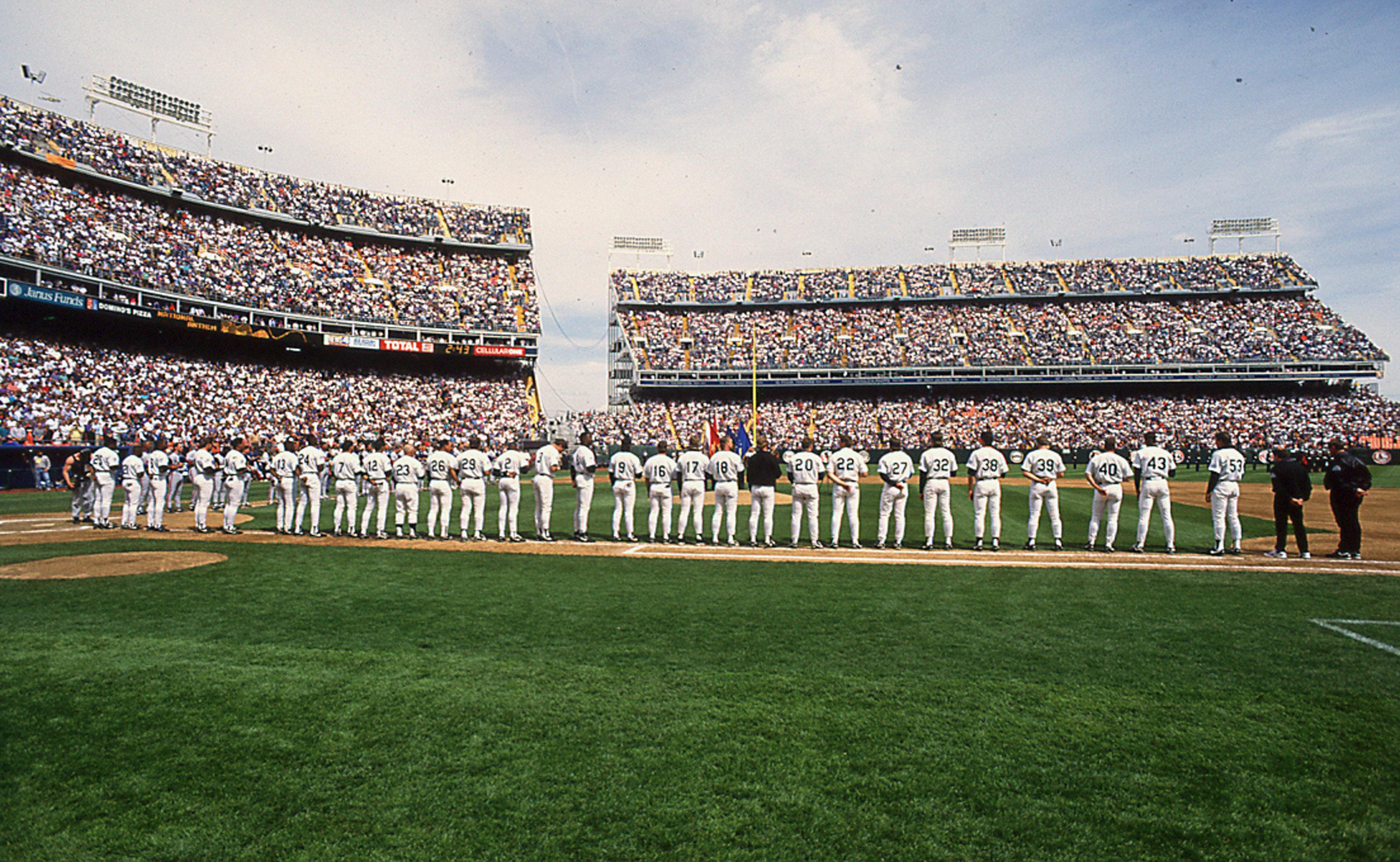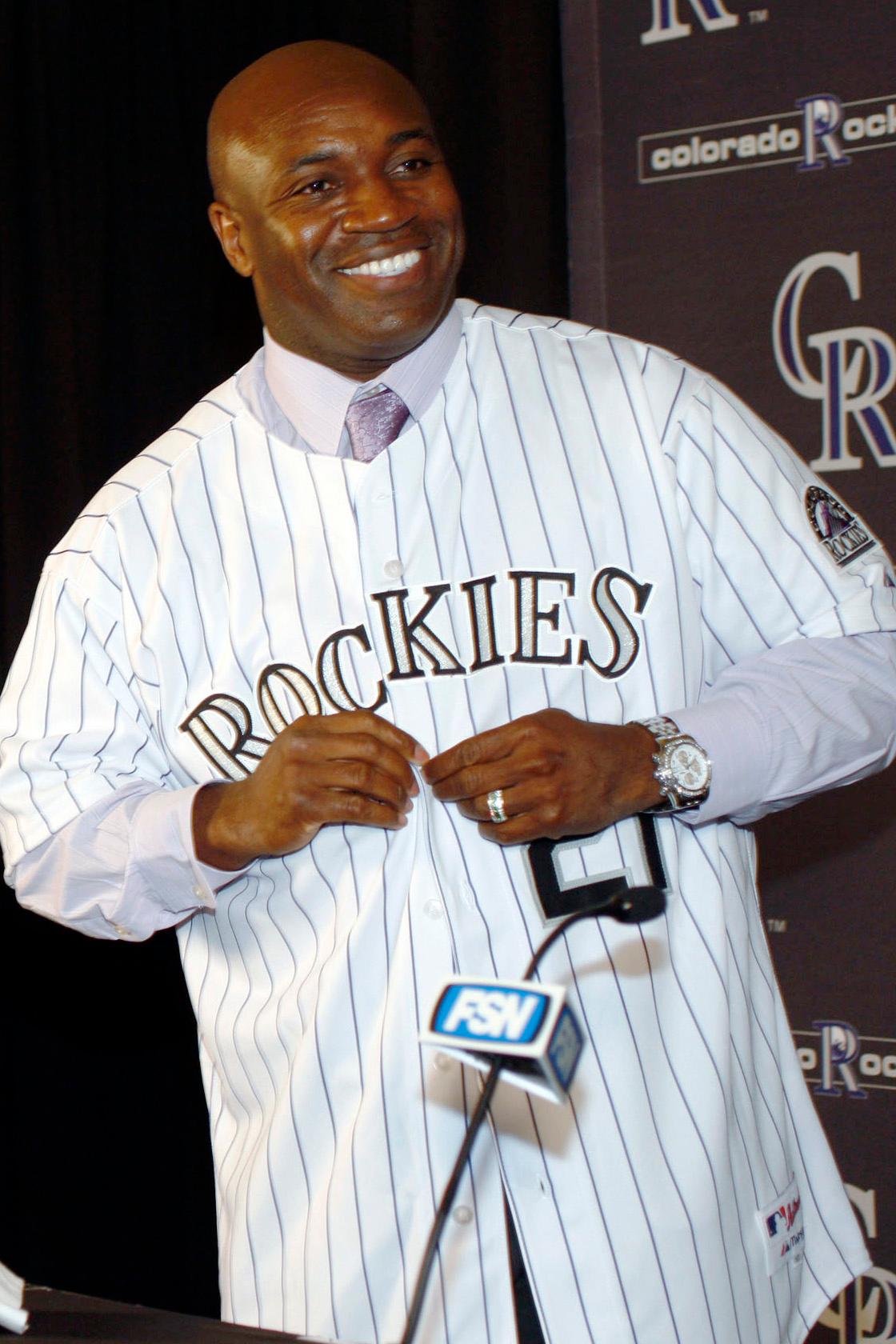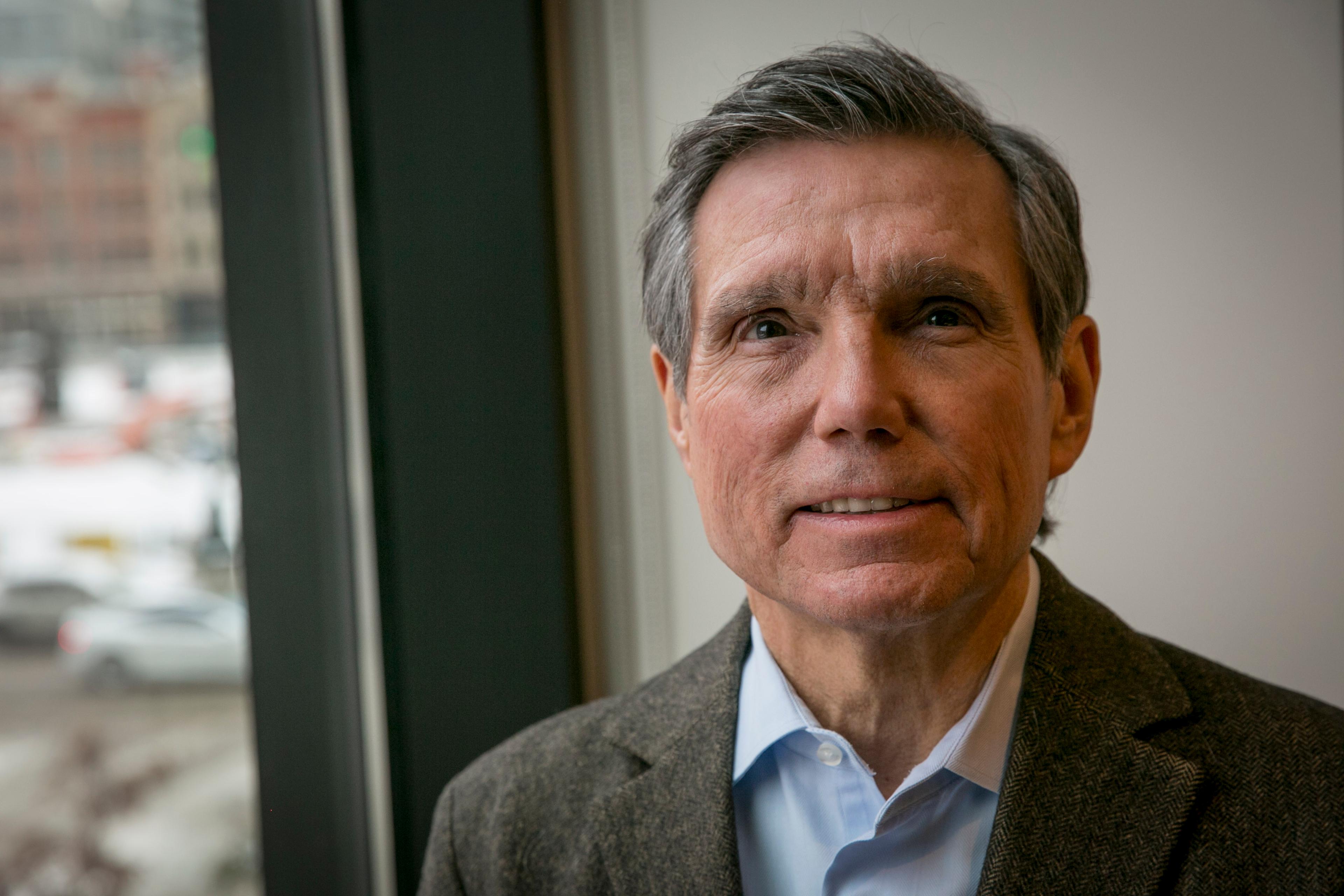

On a blue-sky April day in Denver in 1993, Rockies batter Eric Young wanted to do something to fire up the crowd.
“To ignite our offense,” Young says now. “Just to get the place rockin’.”
It wasn’t just any crowd. The capacity gathering of more than 80,000 people inside Mile High Stadium - the largest crowd to ever witness a regular season baseball game - was just waiting to erupt. It was the first home game in Rockies history, less than two years after Major League Baseball announced Colorado would be awarded one of two expansion franchises.
- Part 1 of a series. Read the second part here: When The Rockies Moved To LoDo, The Team And The Neighborhood Grew Together
Young was known for his speed, not his power. He was just hoping to get on base when the count reached 3 balls and 2 strikes during his at-bat.
“If they give you a good pitch,” he recalls thinking, “just take a hard whack at it.”
Did he ever.

Young belted a home run over the left field wall that shook the stadium, or as KOA broadcaster Jeff Kingery said at the time, caused the snow on Pikes Peak to fall off “with the decibel level of Mile High Stadium.”
Young’s homer remains perhaps the most iconic in the Rockies 25 year history.
“I found out later that a lot of schools were watching (the game) on TV,” Young says. “I didn’t realize how big of a deal it was. When you think about the generation of those students that were in that elementary school, and now they’re grown, they tell me how much they remember Colorado, Opening Day, Eric Young hitting a home run."
“I get ushers, I get police officers, I get older men, I get TV people saying ‘I just want to shake your hand,” Young says.“People that were connected to that game will always be able to cherish that and have that bond, and I will have that bond with them.”
The Rockies beat the Montreal Expos that day, April 9, 1993, 11-4. Rockies fan Paul Lonigro of Thornton was there.
“I’ll never forget it,” he says. “I remember the feeling in the crowd – I don’t think any game of baseball had that many people, and I don’t think we’ll ever see that again anywhere. People went wild. I mean, it was the start of something brand new. It was like a fever, the excitement level was unbelievable.”
Now, 25 years later, the team and its fans are celebrating a quarter century in the Mile High City.
Twists And Turns
Before Rockies fever was born, Denver’s attempt to land a baseball franchise took many twists and turns.
Denver was a longtime home to minor league teams like the Denver Bears, then the Zephyrs. In 1977 Denver was among several cities vying for a franchise when the league expanded that year, but the city fell short to Seattle and Toronto. Then, in the mid-1980’s the league started talks around another expansion. In 1990, Denver was one of 10 cities on the short list. Federico Pena was mayor at the time, and played a major role in wooing the league.

“We took a very active role in working with (Major League Baseball Commissioner) Peter Ueberroth and the owners of the teams,” Pena said. “We had all kinds of exhibition games in the city for years to demonstrate that Denver was ready for Major League Baseball.”
But Pena knew the only way Denver would be taken seriously by the league was if the city could promise a new ballpark. So the state legislature passed a measure that would ask metro Denver voters to pass a penny sales tax to fund a baseball stadium, contingent on Denver being awarded a team. And voters approved.
“We did our part and we turned to the major leagues and said, ‘Alright where's the team?” Pena said.
Sure enough, in July 1991, Denver got its franchise. The city’s new team, along with another expansion club from Miami, would start start play two years later. The Rockies were set to play their first two seasons at Mile High Stadium, home of the Broncos, before Coors Field was ready in 1995.
But just months before the Rockies were set to start their first season, something was happening in Youngstown, Ohio that nearly derailed the dream of Major League Baseball in Denver.
One of the Rockies’ principal owners, Mickey Monus, became embroiled in a fraud and embezzlement scandal involving his own Ohio-based chain of discount drug stores called Phar-Mor. Monus faced criminal charges, forcing he and fellow Rockies principal owner, and Youngstown, Ohio resident, John Antonucci, to sell their stake in the franchise.

Longtime baseball writer Tracy Ringolsby, who was the Rockies beat reporter for the Rocky Mountain News at the time, hopped a plane to New York to meet with National League President Bill White. He remembers sitting in White’s office as the Rockies’ financial crisis was unfolding.
“We’re talking about it, and he’s on the phone,” Ringolsby recalls. “And he’s arranging to have a news conference in Tampa to announce the expansion team was going to go to Tampa instead of Denver.”
Yes, Denver came this close to losing its franchise. But then came a bottom-of-the-ninth save -- thanks to a Denver trucker and a Greeley meat-packer. Ringolsby just happened to be there when Bill White got that phone call too.
“And then (White) starts to smile,” Ringolsby said. “He hangs up and he goes, ‘Do you know Jerry McMorris? I said, ‘I know the name, he’s got the big trucking company (in Colorado).’ ‘Well he just stepped up. He and a Dick Monfort are gonna buy the team away from Monus. We just saved it for Denver.”
McMorris owned NationsWay Transport. Dick and and his brother Charlie Monfort owned one of the largest meat packing plants in the country. Together, they came up with the money needed to save the franchise. The Monforts remain the primary owners of the Rockies today. McMorris - who sold his stake of the franchise to the Monforts in 2005, after his trucking company went through financial difficulties - died of pancreatic cancer two years ago.
Nine months removed from that financial scare, the Rockies began their first season on the road against the Mets in New York. They lost both those games before winning their first in front of their enormous home crowd on Opening Day at Mile High Stadium. The Rockies led the majors in attendance their inaugural season. Nearly 4.5 million people went to games that year. That was more than Colorado’s entire population at the time.
Jeff Jensen of Fort Collins was in a lot of those crowds. He still goes to games wearing the same Rockies hat he bought that first season, in 1993.
“I grew up in Nebraska, where we didn’t have professional baseball, so when the Rockies came to Colorado it was a great day,” he says. “It was like, we finally have a way to go to a ballpark, sit and have a beer and a hot dog, and watch a ballgame on a Wednesday afternoon while everybody else has to work.”
Jenny Cavnar grew up watching the Rockies in Aurora. She’s now part of the ATT SportsNet team that covers Rockies broadcasts on TV. She remembers going to games at Mile High Stadium that year, and “the feel of being at the ballpark. ... The feel of keeping score, talking baseball with my dad, peanut shells, the way the grass smelled, all those little things that are baseball.”
“It's really cool to look back because you have those first moments of going to games, and how baseball is going to be in Colorado,” she says. ”And the excitement to now, where there's a history of baseball in Colorado 25 years later.”
---
This is the first of a two-part series on the 25th anniversary of the Colorado Rockies. You can read and hear the second part here: When The Rockies Moved To LoDo, The Team And The Neighborhood Grew Together








